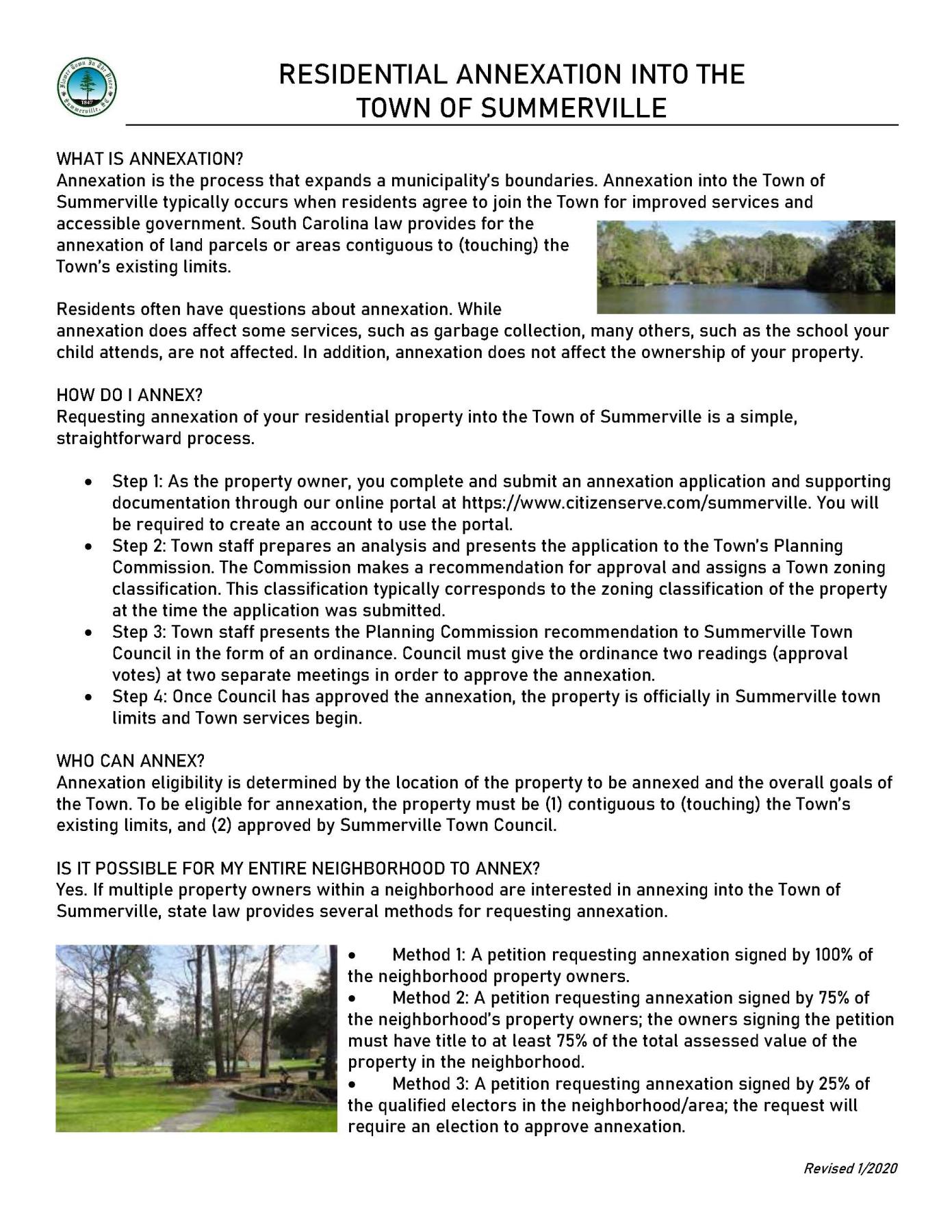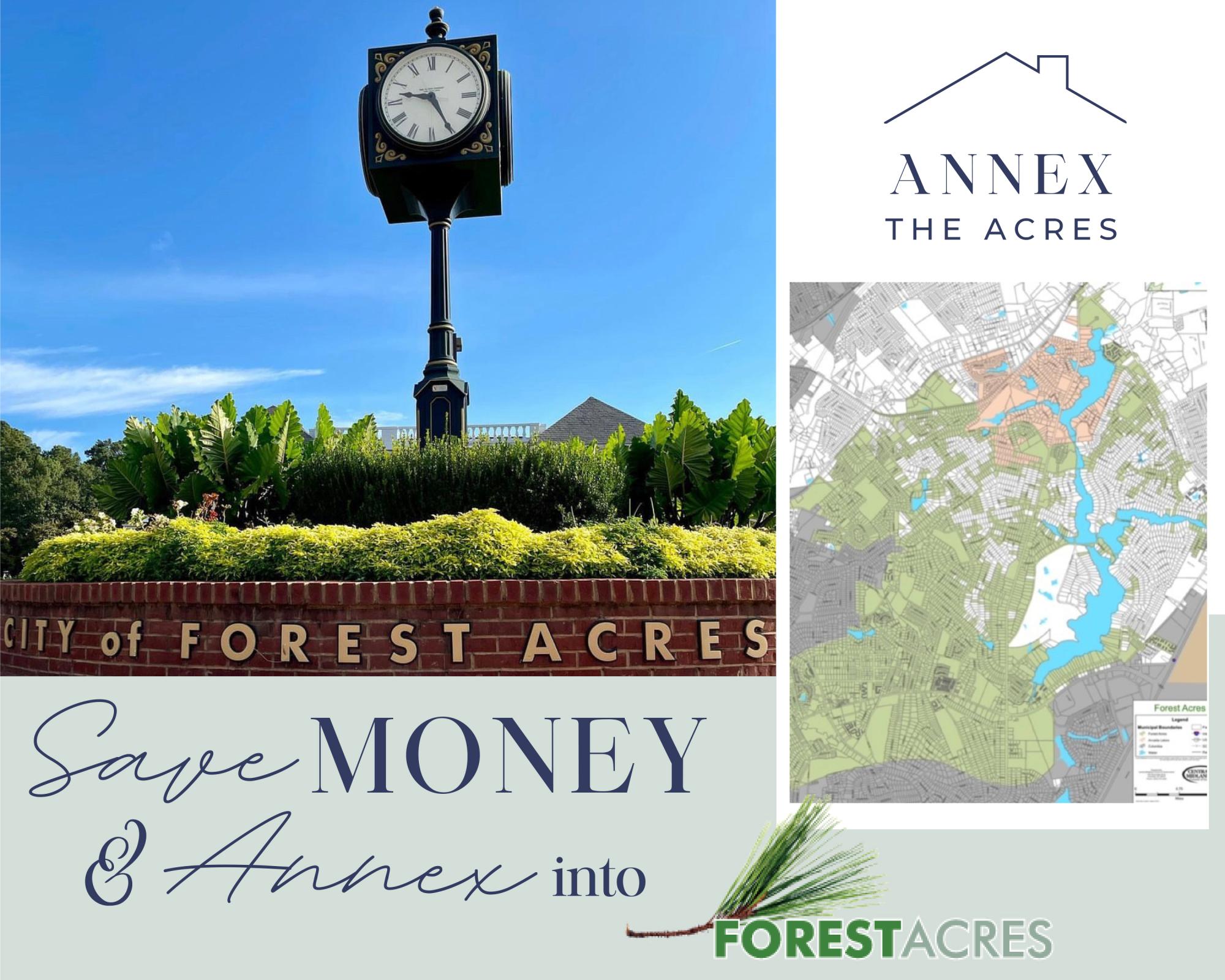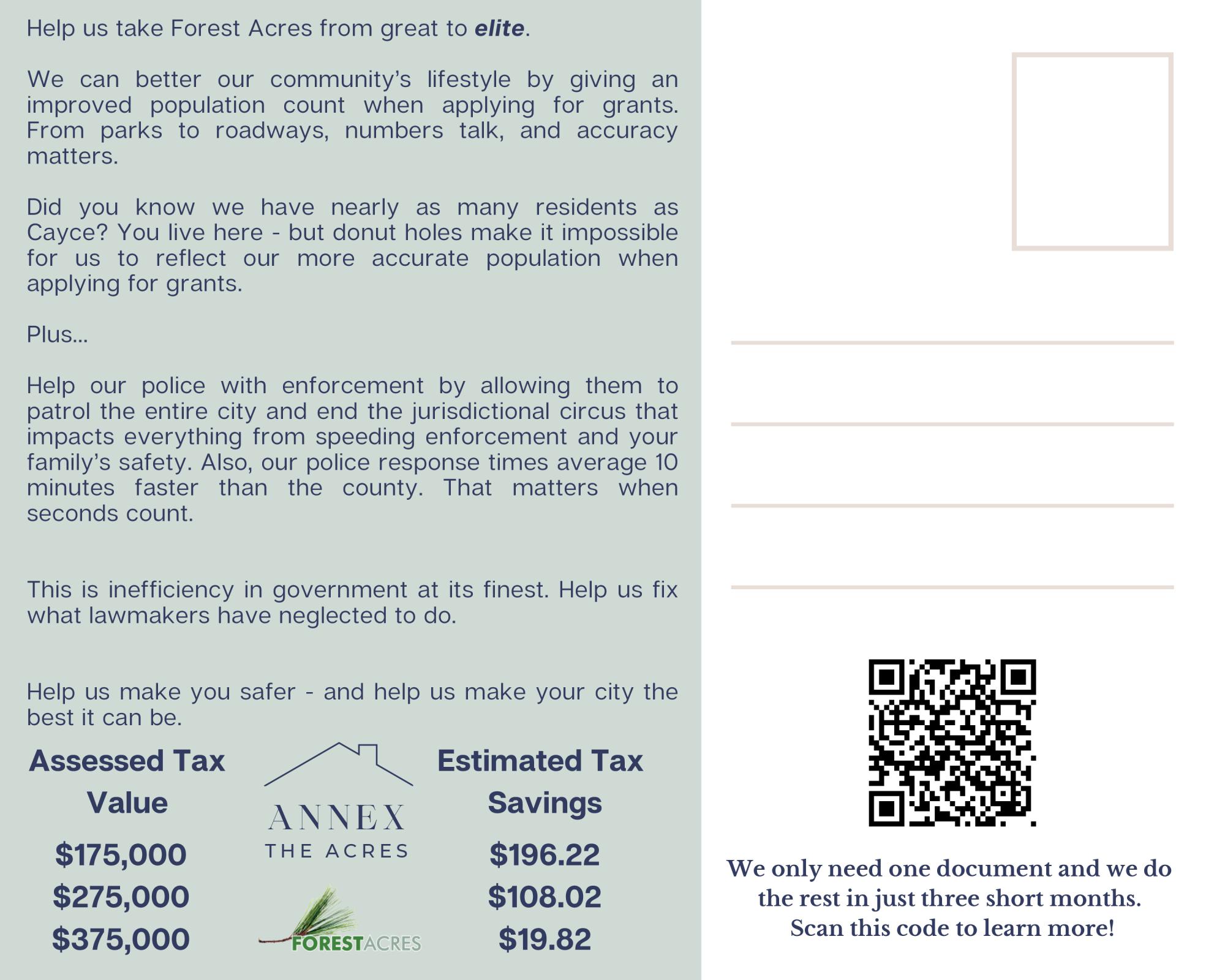In municipal government, annexation receives a great deal of discussion, but it’s often a poorly understood issue.
Observers and property owners may wonder whether given areas are “in the city,” or be unclear on whose emergency services will arrive if their property faces a fire or a crime. They might wonder whether they are in a position to annex into the city, or what will happen to their taxes and fees if they do. If they are located outside the city, they might be confused about why they cannot vote for the city council that has the same city name as their mailing address.
In an era when South Carolina’s growing population is placing substantial development pressure on many communities, the infrastructure construction and land-use considerations of annexation are at the forefront as well.
Establishing a strategic communication plan, however, can alleviate some of the uncertainty municipalities face when talking to constituents about the subject. As municipalities across the state grapple with how to deal with their municipal enclaves or “doughnut holes” — the unincorporated properties within municipal and jurisdictional boundaries — some are working to have annexation conversations in approachable and accessible ways. The Town of Summerville and the City of Forest Acres are among those using innovative solutions to address this multifaceted issue.
With the Charleston-area population boom bringing more residents to wider portions of the Lowcountry, places like the Town of Summerville have seen a population surge, with many more residents expected in the years to come. As part of the town’s Vision Plan, adopted in July 2014, a top priority remains the implementation of an annexation strategy.
Christopher Makowski, who joined the town over a year ago as the public information officer, reported that in the last two years, 23 parcels totaling in 89.125 acres have been annexed through 16 annexation ordinances. That follows the reported annexation of more than 900 acres off of Nexton Parkway in 2020.
To get the word out, the town offers various ways of communicating about the annexation process and explaining annexation as a whole, Makowski said. One way to achieve this is through the use of the town’s website, which has several dedicated annexation pages that prominently address important annexation topics, from defining it to covering the benefits of annexing into the town to a step-by-step outline of the process.
Summerville distributes an annexation brochure as well, Makowski said, which describes town services and benefits as well annexation eligibility requirements.

Summerville's annexation communication materials explain both the process and
the potential benefits. Photo: Town of Summerville.
The town also created an internal annexation work plan.
“This work plan is almost a step-by-step guide to really help someone go through the annexation process — jurisdictional concerns, the benefits and town services and amenities you’d be gaining if you annexed into the town, potential costs to the town, potential costs to residents and businesses, to generalized next steps,” Makowski said.
Since the work plan creates a more comprehensive look at annexation for anyone interested, he said, it also serves as another tool in the annexation communication toolbox.
Makowski explained that an additional outreach strategy happens at the personal level, where staff meet with homeowners associations to discuss the benefits of annexing into Summerville. That’s not all — the city also has one-on-one meetings with incoming developers.
“If we see developers coming into a new area, we’ll set up those meetings to discuss the potentials and the benefits of annexation,” he said.
In the Midlands, the City of Forest Acres is no stranger to the annexation conversation, and there’s more to come. Lynnsey Baker, public information officer, who joined the city over two years ago after relocating to Forest Acres, is about to embark on a second phase of the “Annex The Acres” campaign.
With a background in broadcast journalism, Baker put her communication skills to work when she transitioned to local government, having the annexation conversations right from the start of stepping into the PIO.
“When they brought me on, one of my many roles … is to figure out a way to annex more homes by explaining to them what the truth is of an annexation, like the traditional way that the city was going about it,” Baker said.


Forest Acres recently mailed hundreds of "Annex the Acres" postcards to unincorporated properties
within its enclaves. Photos: City of Forest Acres.
A city-wide community meeting in April 2022 provided area residents with an annexation presentation. Baker recalled that about 35 people attended that early meeting, which was advertised solely on social media.
“It kind of evolved over the next year, where I would look at real-life situations,” Baker said, recounting a busy day at the police department, where she also handles communications.
“I was noticing all these calls coming in and our dispatcher spending so much time referring them on, saying ‘You’re not ours, you’re not ours.’”
The confusion over who people needed to call comes from an understandable place: Forest Acres has numerous doughnut holes within its boundaries.
“If people really looked at the map of Forest Acres, [it would look] as if a child had colored inside the lines,” she said. “It is abysmal the way annexation lines are drawn within our city — beyond inefficient.”
“So that day [at Forest Acres Police Department], I took video of our dispatcher referring people on and I called it the “Daily Circus,” just trying to explain to people in a digestible form, using my news background … trying to break it down for them as to how this affects you,” she said.
Baker also included real-life annexations in the city’s social media posts, aimed at helping the audience understand how choosing to annex could impact governmental services at their property.
“It comes from an issue of safety. I don’t think people realize – you call 911 and you’re unincorporated, your call is going to get dispatched to the county.” Baker explained that the centrally located Forest Acres Police Department has a three-minute average response time, whereas Richland County’s is 12.
To further the conversation, Baker created a webpage dedicated to annexing into Forest Acres. With the title of “Annex The Acres,” the campaign formally launched in February 2024 with a postcard mailing to over 600 unincorporated homes within the city’s doughnut holes. It discussed annexation benefits and gave a QR code linking to the application page.
Baker said that part of her strategy is to find creative ways to tap into the immense hometown pride residents of Forest Acres have for their city. Although the 2020
U.S. Census gave the city’s population as 10,532, the Forest Acres area — municipal enclaves and all — could be anywhere from 12,000 to 15,000, putting it more in the realm of the nearby City of Cayce and not too far behind West Columbia.
A recent analysis concluded that 75% of properties incorporated into Forest Acres pay for 100% of city amenities and services. The other 25% represent the unincorporated properties within the city’s boundaries. What’s more, Baker said, approximately 80% of the unincorporated properties would actually save money on property taxes by incorporating into the city.
“We want to promote efficiency in government,” she said. “And I don’t think it’s a one-size-fits-all approach.”
With annexation being such a pressing issue across South Carolina, municipalities are looking for creative strategies to broach the conversation with unincorporated residents, in hopes of closing doughnut holes, gathering accurate population data, and bringing more community members into the fold.
